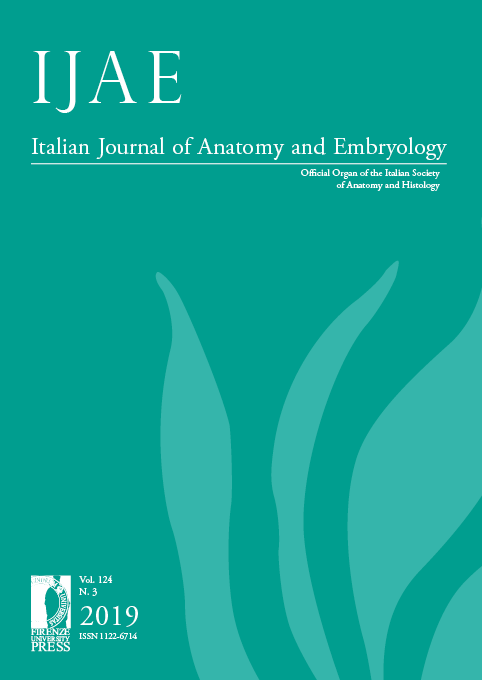Morphometric evaluation of the infraorbital foramen in human dry skulls of South Indian population
Published 2020-05-20
Keywords
- Infraorbital foramen,
- infraorbital margin,
- size,
- distance,
- measurements
How to Cite
Abstract
The aim of this study was to determine the location of the infraorbital foramen (IOF) in relation to infraorbital margin (IOM), anterior nasal spine (ANS) and Nasion (NA), Supraorbital margin (SOM) and sockets of the maxillary teeth in adult skulls (of South Indian population). Fourteen skulls (28 sides) have been analyzed. In order to analyse the size and the relative position of the IOF with the above parameters, we have used a digital caliper for measurements with a precision of 0.01 mm. The IOF was oval in shape (85.7 %) on right side and (71.4 %) on left side while none of them were found either in semilunar or triangular shape in contrast to previous reports. In most of the cases IOF was found to be situated lateral to the plane of SOM. The vertical and transverse diameter of the IOF on both sides was found to be almost equal. The mean distance and standard deviation (mean ± SD) between right IOF and ANS, IOM and NA were 33.6 ±2.22 mm, 5.49± 1.10 mm and 41.4± 3.27 mm respectively, while the mean ± SD between left IOF and ANS, IOM and NA were 33.1 ± 2.30 mm, 5.85 ±1.06 mm and 40.3 ± 3.09 mm respectively. The results obtained from descriptive analysis are relevant and help surgeons for blocking the infraorbital nerve while performing surgeries in midface region, particularly in patients with edema of the infraorbital region when precise location of the IOF is difficult.


